Space
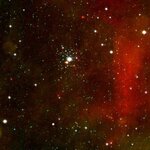
Smithsonian Center for Astrophysics astronomers examined the 5 million-year-old star cluster NGC 2362 with NASA's Spitzer Space Telescope, which can detect the signatures of actively forming planets in infrared light, and found that all stars with the mass of the Sun or greater have lost their protoplanetary (planet-forming) disks.
Only a few stars less massive than the Sun retain their protoplanetary disks. These disks provide the raw material for forming gas giants like Jupiter. Therefore, gas giants have to form in less than 5 million years or they probably won't form at all.
So baby…
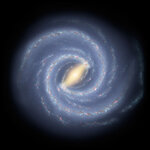
Iowa State University's Martin Pohl is part of a research team that has developed the first complete map of the Milky Way galaxy's spiral arms.
The map shows the inner part of the Milky Way has two prominent, symmetric spiral arms, which extend into the outer galaxy where they branch into four spiral arms.
"For the first time these arms are mapped over the entire Milky Way," said Pohl, an Iowa State associate professor of physics and astronomy. "The branching of two of the arms may explain why previous studies – using mainly the inner or mainly the outer galaxy – have found conflicting…

From troubled beginnings nearly 18 years ago, the Hubble Space Telescope has revolutionized astronomy and its stunning images have stirred the imaginations of people around the globe.
But as the International Year of Astronomy dawns, the renowned telescope is preparing for its final chapter, starting with the scheduled May 12 launch of the space shuttle Atlantis for NASA's fifth and final service mission to the telescope.
The repairs will provide Hubble with a future as bright, though perhaps not nearly as long, as its past, said Julianne Dalcanton, a University of Washington associate…
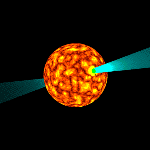
Keeping track of time is hard. Not only in terms of remembering meetings and be on time at the train station. Actually measuring time is a scientific art. Most of us find it logical to use the Earth rotation as a reference and define time scale and units from that.
If only the Earth would have been more cooperative!
It isn't rotating with a constant speed for starters and it adds a little wobbling on top of that, messing things up. With the user requirements of today's technology such as GPS satellites and internet, that is just not good enough to define UTC and we use the more consistent…
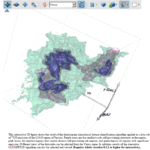
New computer visualization technology developed by the Harvard Initiative in Innovative Computing has helped astrophysicists understand that gravity plays a larger role than previously thought in deep space's vast, star-forming molecular clouds.
The insight is being illustrated in Nature's online version through new three-dimensional Portable Document Format (PDF) technology that will allow readers to view the article's key graphics using free PDF software already commonly found on computers.
The work was led by Astronomy Professor Alyssa Goodman of Harvard's Faculty of Arts and Sciences, the…
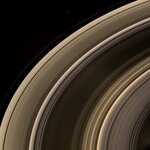
Image Fortress today announced that it has launched the International Space Archives, an online digital library, organizing the vast collections of still and video imagery produced by the manned and unmanned space programs of the world.
Over the past fifty years, the space programs in the United States and other countries have amassed extensive volumes of still and motion picture photography that has been largely inaccessible to the public. The International Space Archives has been designed to make this incredible collection of imagery available to a worldwide audience.
"The International…

According to the Bible, when Jesus was born three Magi saw a star in the East that 'signaled the birth of a new king'. But just what was it, from an astronomical point of view, that the Magi could actually have seen?
Fred Grosse, a professor of physics and astronomy at Susquehanna University in Selinsgrove, Pa., says there are several popular theories that may answer this question.
“Astronomical objects or events which would be of interest to serious stargazers of the time include comets and meteors, nova or supernova, and auroras,” Grosse says. But the favorite candidate hypothesis for the…
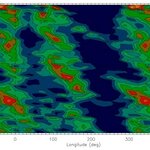
The CoRoT satellite, a space mission led by the French Space Agency CNES with the participation of Austria, Belgium, Brazil, Germany, Spain and the European Space Agency, ESA (RSSD and Science programme, that includes an Italian contribution), has recently observed a star analogous to the young Sun at an age of approximately 500 million years, named CoRoTExo-2a.
This star is accompanied by a giant planet orbiting around it in only 1.7 days, that was discovered by the CoRoT Extrasolar Planet Team. An investigation on the intrinsic variations of the star has been carried out by another…

The festive season has arrived for astronomers at the European Southern Observatory (ESO) in the form of this dramatic new image. It shows the swirling gas around the region known as NGC 2264 — an area of sky that includes the sparkling blue baubles of the Christmas Tree star cluster.
NGC 2264 lies about 2600 light-years from Earth in the obscure constellation of Monoceros, the Unicorn, not far from the more familiar figure of Orion, the Hunter. The image shows a region of space about 30 light-years across.
William Herschel discovered this fascinating object during his great sky surveys…

The astronomy/physics sector of the internets is all abuzz about Dark Energy.
It was originally thought that gravity would slow the expansion of the universe as huge astronomical bodies become attracted to each other and pull together like Sumo wrestlers trying to share a waterbed. That has not happened. Instead, the universe is expanding, and doing so at an increasing rate. Dark Energy is the general repulsive force that is kicking gravity's butt and driving the expansion of the universe.
The fact that it is called "Dark" Energy pretty much sums up how much we know about…